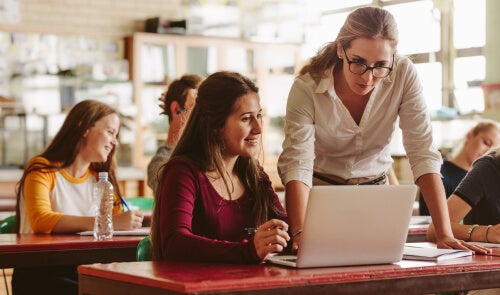Spiral Curriculum - What Is It?


Reviewed and approved by the psychologist Gema Sánchez Cuevas
The spiral curriculum is about teaching a methodology proposed by the Singapore math method. Its goal is to help students deepen their knowledge progressively. But how can one achieve it?
The Singapore math method is a methodology designed by the INE of Singapore that intended for students to learn mathematics without the need to memorize anything. It focuses on the why and how, with the idea that answers help improve the understanding of knowledge and, consequently, facilitate the memorization process.
Thus, this method has a lot to do with the spiral curriculum discovered by Jerome Bruner, a psychologist who made important contributions to the field of teaching and learning. Among them, this methodological proposal that you’re about to discover.

Spiral curriculum
The spiral curriculum addresses learning in a way in which students can go from general knowledge to specialized knowledge. The way he achieves it is by continuous learning, as it prevents concepts from easily falling into oblivion.
To achieve this, the spiral curriculum begins with very simple concepts that will become complicated as students make progress in their learning. They can do so since the curriculum adapts to the possibilities that students have. Thus, everyone can move forward and better understand the concepts of a subject.
However, something that’s essential for this curriculum to work is that, on a recurring basis, the students return to the same general themes; to the broad principle. What are they supposed to accomplish with this? Well, when they return to the deeper part of the subject, they’ll be able to make various analyzes and representations of what they previously analyzed.
With this curriculum, Bruner intended for students to feed their curiosity. To find inspiration to expand their knowledge, returning – with another look – to what they already know. Thus, they could reason and review the conclusions they previously reached.
Mistakes and dead ends
Jerome Bruner wasn’t concerned about mistakes. In fact, he considered them a good way for students to learn. Therefore, both mistakes and dead ends are welcome in the spiral curriculum.
It doesn’t matter what it takes to learn a concept. For Bruner, the interest and satisfaction of stimulating each student’s hypothesis prevail.
Understanding that making mistakes shouldn’t produce embarrassment, but rather be a way to reorient the hypotheses and continue researching is an important way to learn that, in fact, promotes the spiral curriculum. Undoubtedly, it’s a different way to teach students. Yet, it yields very positive results.

Spiral curriculum example
Now that you know more about the spiral curriculum, here’s a brief example of how learning takes place with it. You’ll start with a very simple objective for young children, such as recognizing and classifying animals.
The first point is to classify the animals and analyze the similarities and differences in each one of them. Later, students will begin to familiarize themselves with the habitats of each animal and their individual behaviors. Finally, they’ll study their anatomy and physiology.
This is very easy. As the habitats move forward, they’ll turn to the concepts they already learned so that students can relate what they previously knew to what they just learned. Thus, they can really understand what they’re studying and feel more curious to find out more about it.
In conclusion, the spiral curriculum allows you to work in a way where a student can think for themselves, draw conclusions, and repair mistakes. A way that promotes research, understanding, and puts aside the temptation to memorize concepts – without understanding them – just to pass an exam. So, do you think it would be possible to implement this curriculum in the current educational model?
All cited sources were thoroughly reviewed by our team to ensure their quality, reliability, currency, and validity. The bibliography of this article was considered reliable and of academic or scientific accuracy.
- Bruner, J. (2011). Aprendizaje por descubrimiento. NYE U: Iberia.
- Bruner, J. S. (2006). In Search of Pedagogy Volume I: The Selected Works of Jerome Bruner, 1957-1978. Routledge.
- Good, T. L., & Brophy, J. E. (1996). Psicología educativa contemporánea. McGraw-Hill.
This text is provided for informational purposes only and does not replace consultation with a professional. If in doubt, consult your specialist.








